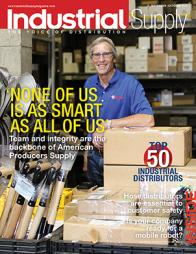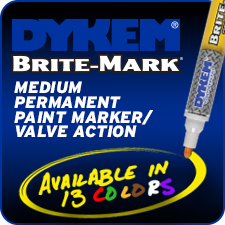Good help is hard to find
Here are ideas to help you locate, hire and keep good employees
By Joan Adams
These days, hiring should be easy. It’s a buyer’s market out there right now. In theory, one should be able to cherry pick the best of the best. And yet, as we all know, that just isn’t how it goes.
The first problem is most managers find themselves hiring in a state of duress. Someone quit, got fired, moved. It doesn’t matter why. What does matter is all of a sudden that person is gone and there’s a big hole in your organization where that person used to be. His / her work is piling up, others are trying to pick up the slack but it is not going so well. This makes finding that new employee urgent.
At the risk of stating the obvious, urgency rarely leads to the best thinking, or in this case the best hire, yet we do it again and again.
Hiring is time consuming, it feels totally hit or miss, it is much less analytical and much more subjective than what most of us are comfortable with. It is by definition an area rife with questions (and precious few answers). Where should we look? What are we looking for? How long should we look? What should we offer? When should we offer? Who should interview the candidate? What should we ask him/her? And so on.
Here are some hiring basics that won’t make the process enjoyable but may make the process less odious and, more importantly, more successful.
First, before posting any want ad or conducting the first interview, define your current jobs and positions that you are trying to fill. Do you actually know what the previous person in that position did? This means all his or her tasks, responsibilities, direct reports, reports to, etc. Is it written down somewhere? That person has disappeared, taking all the internal knowledge of the job. How long will it take the new person to figure out what the new job entails? Better job descriptions make it easier to find a replacement and make the new replacement more productive. Accurate and thorough job definitions are the starting point for employee evaluations and all that other good HR stuff. Once you have documented accurate job descriptions, you have a list of the requirements the new employee will need to fulfill.
Second, in order to keep the URGENT I MUST HIRE NOW feeling at bay, you should always be looking for people. Don’t wait until catastrophe strikes and then start your search from scratch. You should have ongoing conversations with at least a handful of worthwhile candidates; these are people you can reach out to when hiring time comes.
Now that you have job descriptions in your hands (something that leads directly to required qualifications), where should you be looking?
In-house: A good place to look is right under your own roof. Look at your own employees and consider an internal hire. I have client companies who actively encouraged their workers to move up in the organization and, from what I have seen, it works very well. I have seen drivers become pick-and-pack guys, pick-and-pack guys who moved on to be warehouse supers and even warehouse supers who move upstairs to inside sales. When promoting from within, you already know the person, his work habits, his training, where he needs to improve. Home grown talent with a little training is often a rewarding solution for everyone involved.
There’s another way to use homegrown talent. When possible, split the responsibilities of the person who has left and divvy them up among existing staff. Give your people an increase in responsibility and an increase in pay.
The Web: The Internet helps people cast a very wide net when searching for employees, and I know of companies that found successful hires from sources like Monster.com and others. I also know Monster.com is expensive, and the hirers got bombarded with thousands of resumes. If you use some kind of search engine-based recruiting tool, remember, its search is only going to be as good as the data you put in. The more precise and specific you are in your criteria, the closer the matches will be (and one assumes the smaller the pile of resumes).
Publications: Trade magazines have a much narrower focus. These will bring in fewer but most likely better-qualified candidates.
So, you’ve done all the right things. You’ve defined the jobs, you’ve promoted from with in, you’ve written very specific, targeted postings and you are still not finding the folks you need. Here’s the next big step, a leap rarely taken in our industry: look outside industrial supply. Look more for capabilities and qualities rather than industry knowledge or expertise. By staying within industry boundaries, you (and everyone else) keep cycling (and recycling) through the same people. There is an overcapacity of good people out there. In every geography I can think of, warehouses are being closed, operations are being consolidated and workforces are being downsized. This means that perfectly capable workers, foremen, supervisors and managers are looking for work (through no fault of their own.) Some of these larger corporations have extensive outplacement programs to help their laid off staff find new work. Get in touch with the people running those programs. Now you really can cherry pick.
Success! You have a tidy pile of resumes in front of you, and each one looks pretty good. This is where the rubber hits the road. You have to speak with each of these individuals and you must come to a decision.
The Interview
No matter who you are looking to hire or how you found them, at some point you have to invite them in and talk to them. Interviewing is not easy. By definition it is not a normal, natural conversation. You have a limited time (a few hours at best) to determine whether this person is the right candidate for you.
For starters, write up a short crib sheet of questions you need answered. This isn’t cheating, nor will you look stupid (in fact you will look thorough and prepared). In your crib sheet, be sure you cover the basics.
- Why did you leave your last job?
- Why do you want this job?
- How many years of experience?, etc.
If you find yourself hard pressed to come up with an hour’s worth of questions, there are many, many Web sites with suggested interview questions. Here is Monster.com’s list: http://career-advice.monster.com/job-interview/interview-questions/100-potential-interview-questions/article.aspx
You can easily tailor these to your specific situation. Remember, this isn’t a friendly chat, this is an interview. It is up to you to control the conversational flow and extract information from the candidates. Of course, the prospective employee wants to know all about your company and the specific opportunity, so you will need to spend a little time describing the company and position. That’s understandable and necessary. Don’t fall into the error that far too many interviewers make, which is to spend the entire interview “selling” their company to the candidate, while learning precious little about the candidate. Make sure at least two other people in your company conduct interviews as well, the person to whom the new candidate will report and a future co-worker. Surely, they will see things that you don’t and vice versa. After the interview day, pull the group together and sort through your findings.
You will come to a meeting of the minds and select the best candidate. The next task will be making this person’s entry into your company as seamless as possible. (Fortunately you already have some of this covered with the accurate job / task / responsibility description. You’ve spent a lot of time and effort to get the right person in the door. Now, in order to make your investment to pay off, you want the new hire to stay. Start thinking orientation, training and various other means to get him or her up to speed and comfortable as soon as possible.
Let everyone else’s misfortune be your gain. Go out and pick up some of these well-qualified people looking for work. Hire them, make them feel like part of the team and keep them.
 Joan S. Adams has consulted for industrial clients for more than 20 years. She operates Pierian, a consultancy that brings sustained and measurable success through operational excellence, customer focus and competitive market strategy. She has engineering degrees from the UW-Madison and MIT. E-mail her at adams@pierian.net.
Joan S. Adams has consulted for industrial clients for more than 20 years. She operates Pierian, a consultancy that brings sustained and measurable success through operational excellence, customer focus and competitive market strategy. She has engineering degrees from the UW-Madison and MIT. E-mail her at adams@pierian.net.
This article originally appeared in the July/August 2011 issue of Industrial Supply magazine. Copyright 2011, Direct Business Media.
I liken the use of Search Firms when hiring new employees, to looking for real estate and utilizing a real estate broker. Finding the property and working though the process, closing, paper work, etc., is something the buyer doesn't navigate everyday. The hiring process is exactly the same! The process is complicated -- setting up and completing the actual search, personal interviews, background checks, verification of degrees, personal references, logistics of interviews, helping with the exiting from a previous position . . . just to name a few of the elements. Looking for qualified individuals is hard enough to find in your own industry . . . finding candidates from another industry, is like looking for a home in a foreign country -- you definitely need help. That's what we do -- we guide our clients through the process!













